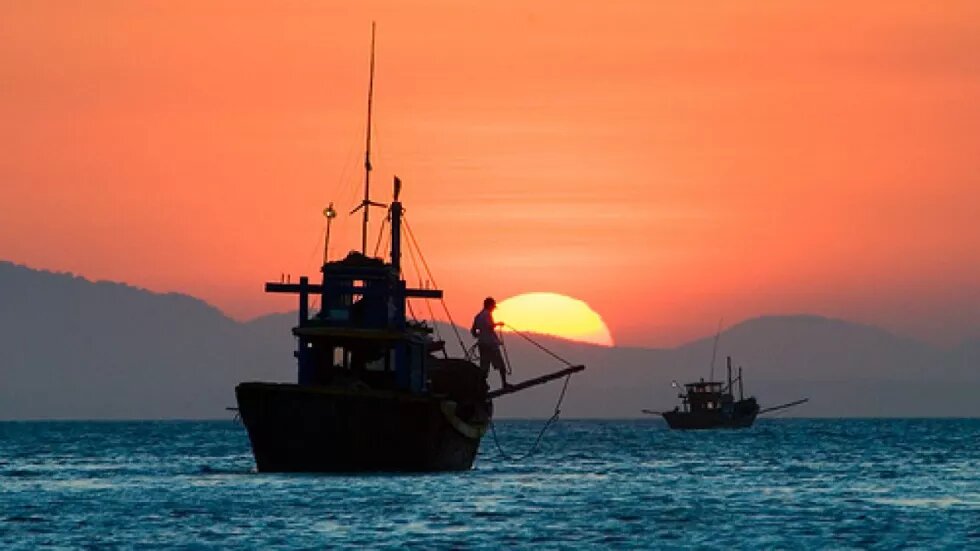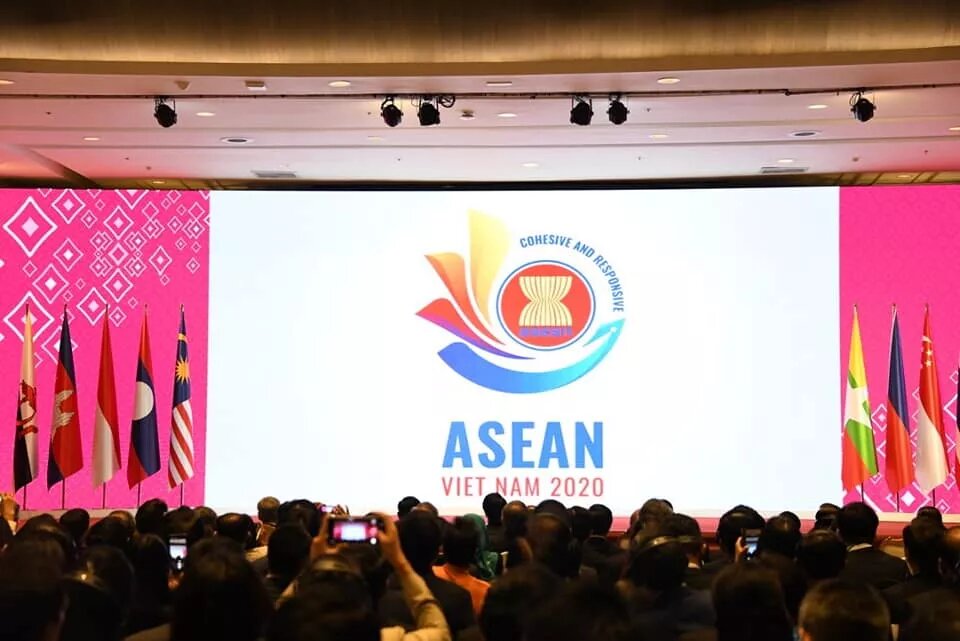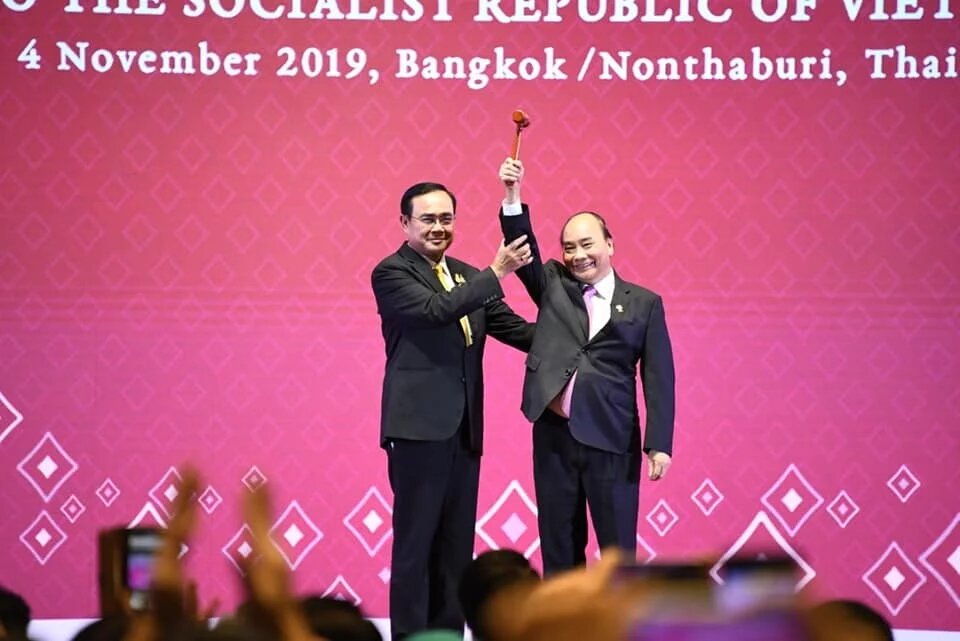
Vietnam’s ASEAN chairmanship in 2020 is particularly important in the transition year focusing on strengthening ASEAN's sustainable cohesion, both in political and security issues and in economic and social matters. To guide the year of the chairmanship, Vietnam has studied and proposed long-term initiatives and Hanoi also hopes that even after the chairmanship of Vietnam has ended, its proposed initiatives will be continuously promoted and implemented in the upcoming years[1]. Vietnam's message of “Cohesive and Responsive”[2] stresses the role of ASEAN’s mechanisms in dealing with existing issues, coping with common challenges and increasingly asserting its central role in the Southeast Asian region. The two issues that cover discussions of Vietnam's ASEAN Chair role this year include territorial disputes in the South China Sea and ASEAN's central role in regional economic architecture.

Great power management in the South China Sea
The chair of ASEAN is responsible for coordinating the activities of ASEAN within one year. In particular, one of the important tasks is to orient the program and content which include topics, priorities, and initiatives, as well as operating, coordinating ASEAN members and partner countries. Among the priorities, the South China Sea dispute is an important one, which is both a challenge to the intra-ASEAN problem and a test of the ASEAN framework in managing the relation of the great powers in the region.
Over the last decade, Vietnam and ASEAN countries have attempted to construct a managing mechanism of South China Sea disputes, and engage regional powers, especially China with this mechanism. Those attempts were bolstered by the judgment by the Permanent Court of Arbitration on July 12, which has borne multiple legal implications as well as the reshaped geostrategic landscape in Southeast Asia. Even though the court has no enforcement powers, the verdict will likely change maritime activities in the overlapping zones in the South China Sea. This award opened more room for cooperative mechanisms between claimant nations, which advocates the status quo in the South China Sea.
Besides, Vietnam minimizes the disputed waters by implicitly acknowledging that Spratly islands do not possess further than territorial waters of 12 nautical miles. Being a stakeholder of the dispute, the core objective of the Vietnamese government in the Spratly is to safeguard its jurisdiction and maritime rights. That objective overrides other calculations. Any unnecessary commotion might complicate their strategies in the Spratly. Vietnam officially hinted at this hidden endorsement in its joint submission on the continental shelf with Malaysia to the United Nations in 2009[3].
Nevertheless, it would not be easier for Vietnam to initiate this kind of movement in the Code of Conduct (COC) negotiation. History has shown that the negotiation process for the Declaration on the Conduct of Parties in the South China Sea (DOC), DOC implementation, and most recently - a binding COC - has always been influenced by different political and strategic factors between countries. Even within ASEAN, disagreements between member states and its ASEAN consensus principle make any decision of the bloc - even if a majority of member states support it - does not formative. Despite the importance of the judgment, its positive elements have not yet been also concretized into ASEAN legal frameworks and mechanisms. In the last 3 years, the COC between ASEAN countries and China has to be developed and broadly discussed in the context of the growing aggression of China in the South China Sea.
Upon completing the construction of artificial islands in the Spratly Islands, in 2018, China proposed to complete the COC in three years. Accordingly, Beijing required ASEAN countries not to exploit resources and conduct exercises with countries outside the region. It is also unclear how Vietnam's proactive approach will work in an uncertain year since the Washington-ASEAN-Beijing security triangle has emerged as the result of the changing landscape. China implies that ASEAN can only cooperate with Beijing and expects those ASEAN countries will “get tired and have to comply with”[4]. To the related ASEAN countries, China has both directly pressured and taken advantage of the “a bad compromise is better than a good lawsuit” attitude of ASEAN members to coerce its member countries to accept the COC according to Beijing's will. Thus, the failure to achieve a COC in the near future continues to strain the South China Sea situation, but the conclusion that an unqualified and superficial COC will be “a nightmare” for stability and peace of the region.
One year is not long a period in office to see institutions or policies fully established and implemented. What ASEAN’s chairmanship could do therefore needs to be focused. For instance, Vietnam should actively cooperate with other multilateral institutions (notably ASEAN-led arrangements) or with other regional great powers through bilateral mechanisms to come out with a joint communiqué of the South China Sea disputes based on the court’s judgment. Specifically, Vietnam can work with Indonesia, the Philippines and Malaysia to issue a joint statement, emphasizing the invalid nature of the nine-dash line since these nations have convergent interests with Vietnam in dispelling China’s historic rights within this U-shaped line.
The added voice from another country on the selected court’s decision certainly increases ASEAN’s legitimacy in disproving China’s claims in the South China Sea. ASEAN as a regional bloc should enlist help from great powers such as Japan, India, and Australia to engage them more in the South China Sea through a rules-based regional architecture. Mutual benefits can begin with a joint communiqué on protecting the freedom of navigation and the marine environment. These areas of cooperation are safe for ASEAN not only to kick off its external balancing strategy but also strengthen ASEAN centrality and multilateral security systems in the region.
Great Mekong Region and Regional Connectivity: Seeking a Balancing Act
Vietnam’s prioritization of regional connectivity and sustainable development are “two sides of the same coin”, which cut across all areas of cross-border cooperation of Southeast Asian countries in general, and the Greater Mekong Sub-region (GMS) states in particular. A vision of the general economic development of Vietnam has to be developed and broadly discussed to create a consensus among the majority of the population in which direction to go. They have been burdened with a series of ensuing domestic instances that might put their legitimacy into danger. The mass fish deaths in 2016 caused by the dumping of toxic wastes into the sea from the giant Taiwanese-invested steel factory Formosa were followed by the recent hacking of flight information display screens at two Vietnamese major airports[5]. Vietnamese public is getting more insecure.
Time does not await Hanoi leaders to weigh too much about sustainable development, especially investments from great powers outside the region. China’s infrastructure investments in ASEAN have grown rapidly over the past few years. Within five years from 2012 to 2017, the value of China's construction contracts in ASEAN has doubled and reached US$ 19 billion[6]. China does not only want to win the infrastructure race with other competitors, especially Japan, but it also wants to dominate this game and alter economic order in the region. For developing countries in ASEAN, accepting China’s generous offers is considered a relatively “wise” choice to boost economic development as these investments are affordable, unconditional and China would provide them with necessary funding and resources to process such mega investments.
Actually, “there is no free lunch”, generous and unconditional investments do not come at no catch. Indeed, many of these investments are facing a lot of issues, including slow progress, low-quality management, debt-trap with unsustainable borrowing and unstable balance of payments[7]. Consequently, some countries are growing caution toward China’s Belt and Road Initiative (BRI) investments such as Indonesia and Malaysia[8]. More importantly, issues of China’s infrastructure investments are not the only reason that dampens ASEAN’s member’s excitement to receive China’s funded projects. Indeed, China's assertiveness in the South China Sea is a major challenge that prevents them from trusting China in mega-projects that could affect their economies and political stability.
In terms of building hydropower plants and its environmental impacts in the GMS, the Vietnamese government states repeatedly that the Mekong is an international river, not a private property of any country. In spite of China’s dominant role in infrastructure development, Vietnam imagines different principles of “territorial integrity” for using Mekong’s water. The exploitation of the river needs to concern about the interests of countries in the region, environmental impacts and influences on species and people living in and along the river, ensuring a balance between economic development, social security, and environmental issues.
The dangers of environmental threats across various fields of economy and the asymmetrical are risks are serious worries for the region. In the GMS, seeking a balancing act between regional connectivity and sustainable development in the regional forum is the basis and key enabler of many developmental initiatives and economic progress. The two examples are ebulliently discussed in recent times. The Mekong River Commission (MRC) has been established based on the Mekong Agreement in 1995 with its four-member countries: Cambodia, Laos, Thailand, and Vietnam, in which China and Myanmar have chosen to be observers.
Another one is the Lancang Mekong Cooperation (LMC), which was proposed, arranged and set up by China in 2016, and it is considered a rival to the Mekong River Commission (MRC). The LMC is established to show the Chinese attitude – respecting their own rules only. The country had created “the all said and done” by building dams upstream that harmed downstream countries, and then set up its managing mechanism. The LMC framework does not provide any definite space for the key debates on dam construction on the Mekong, the mechanism by which the MRC has facilitated countries to participate in discussions, a win-win partnership between member states, and some recognition of the role of civil society.
ASEAN’s hopes of fostering transportation connectivity with China that would profit all sides (“win-win” solutions) fail to consider China’s wider strategic view and self-interest. While China’s statements about BRI may align with ASEAN’s development and commercial aspirations, Beijing accords these infrastructure systems far greater strategic importance than do ASEAN nations. If Southeast Asian countries do not take this into account, the new infrastructure connections, which would tie each nation individually to China rather than link China with ASEAN as a whole, could ultimately pose a threat to regional connectivity, a key principle in the maintenance of the organization’s integrity, unity, and security.
Large-scale technical systems produced and expressive of socio-technical imaginaries. Practicing the voluntary standards of behavior related to ecological and environmental issues, implementing a framework of constructing strong belief, and strengthening law should be encouraged to bolster ASEAN’s negotiating advantage with the great powers outside the region in developing mega infrastructure projects. To cooperate with China and utilize these resources, ASEAN should take a comprehensive and coordinated approach to receive China’s infrastructure investment. ASEAN members must have a joint vision of connectivity and a common standard for project approval, management, implementation, and monitoring.
Back to the future: Toward a “cohesive and responsive” ASEAN
Effective chairmanship is expected to resolve divergences between ASEAN member states and act as a mediator in contradictory situations. To take an effective role of ASEAN chairmanship, Vietnam should seek to be a part of a solution to problems, rather than evoking issues where ASEAN countries fail to create consensus. The key success factors are the balance between the domestic politics of ASEAN member states and common regional issues. More important, ASEAN needs to acknowledge that the biggest risk it faces is its reluctance to accept the risk that ASEAN's decision-making activity has been exposed to in recent years.
Another advantage of Vietnam is the role of a non-permanent member of the United Nations Security Council 2020[9]. The non-permanent member has provided an opportunity to focus on the big themes of the global community such as climate change, maintenance of international peace and security and freedom of navigation and overflight, etc. Despite the different nature of the decision-making processes in the two organizations which make it difficult to establish real linkage between these two institutions, this advantage offers suggestions for Vietnam to skillfully utilize these two roles to addressing important issues of Southeast Asian countries. The information flow between these platforms should be promoted effectively and smoothly. Public opinion and the world community is an important weapon in sensitive issues.
Managing the rising competition between great powers in the Southeast Asian region is not an easy task, which should go far beyond Vietnam’s chairmanship. Assuring that there is a status quo in the conspicuous issues (avoiding break out into confrontation) is an important result that Vietnam and Southeast Asian nations should attempt to achieve. To prevent long-term uncertainties and to take advantage of all possible opportunities, ASEAN needs to act audaciously in the second phase of the economic integration process, which aims to create a common market and common manufacturing platform in Southeast Asia. In this context, Vietnam needs to promote better coordination across the platforms of diplomatic, political, defense, economic, environmental and social institutions of ASEAN. This will reinforce Vietnam's image as an important regional coordinator if ASEAN achieves something clear under its chairmanship by 2020.
REFERENCES
[1] "Nhiệm vụ của Chủ tịch ASEAN: Hóa giải thách thức và nắm bắt cơ hội" BÁO CHÍNH PHỦ, September 27, 2019.
http://baochinhphu.vn/Viet-Nam-ASEAN/Nhiem-vu-cua-Chu-tich-ASEAN-Hoa-giai-thach-thuc-va-nam-bat-co-hoi/376117.vgp; “Toạ đàm ‘Hướng tới Năm Chủ tịch ASEAN 2020, BỘ NGOẠI GIAO VIỆT NAM, September 19, 2019. http://www.mofahcm.gov.vn/vi/mofa/cs_doingoai/nr111026121159/ns180920140604; “Hội thảo ‘Cộng đồng Asean: Bản sắc và vai trò trung tâm’”, HỌC VIỆN NGOẠI GIAO – BỘ NGOẠI GIAO VIỆT NAM, March 20, 2019. https://dav.edu.vn/hoi-thao-cong-dong-asean-ban-sac-va-vai-tro-trung-tam/
[2] “Thủ tướng phát biểu tại lễ nhận chuyển giao vai trò Chủ tịch ASEAN”, TRANG TIN ĐIỆN TỬ THỦ TƯỚNG CHÍNH PHỦ VIỆT NAM, November 5, 2019 http://thutuong.chinhphu.vn/Home/Thu-tuong-phat-bieu-tai-le-nhan-chuyen-giao-vai-tro-Chu-tich-ASEAN/201911/30499.vgp
[3] “Commission on the Limits of the Continental Shelf (CLCS) - Outer limits of the continental shelf beyond 200 nautical miles from the baselines: Submissions to the Commission: Joint submission by Malaysia and the Socialist Republic of Viet Nam”, OCEAN AND LAW OF THE SEA – UN, May 3, 2011. https://www.un.org/Depts/los/clcs_new/submissions_files/submission_mysvnm_33_2009.htm
[4] “Chuyên gia Mỹ: Trung Quốc đang 'gây áp lực tối đa' ở Biển Đông”, VN EXPRESS, August 1, 2019. https://vnexpress.net/the-gioi/chuyen-gia-my-trung-quoc-dang-gay-ap-luc-toi-da-o-bien-dong-3959336.html
[5]"Formosa responsible for mass fish deaths: Vietnamese government." VN Express International, June 30, 2016.
https://e.vnexpress.net/news/news/formosa-responsible-for-mass-fish-deaths-vietnamese-government-3428722.html
[6] “Đầu tư hạ tầng tại ASEAN: Trung Quốc "hất cẳng" Nhật”, BÁO DIỄN ĐÀN DOANH NGHIỆP, January 15,2019. https://enternews.vn/dang-sau-cau-chuyen-trung-quoc-do-tien-vao-phat-trien-ha-tang-tai-dong-nam-a-143582.html
[7] “Belt and Road Initiative: Strategies to Deliver in the Next Phase”, IMF, April 4, 2018 https://www.imf.org/en/News/Articles/2018/04/11/sp041218-belt-and-road-initiative-strategies-to-deliver-in-the-next-phase
[8] “Indonesian election: What to expect in Joko Widodo’s second presidential term”, SCMP, April 19, 2019. https://www.scmp.com/week-asia/politics/article/3006806/indonesian-election-what-expect-joko-widodos-second-presidential; “Malaysia's Mahathir cancels China-backed rail, pipeline projects”, REUTERS, August 21, 2019. https://www.reuters.com/article/us-china-malaysia/malaysias-mahathir-cancels-china-backed-rail-pipeline-projects-idUSKCN1L60DQ
[9] “VN becomes non-permanent member of UN Security Council for 2020-2021”, VGP NEWS, June 8, 2019. http://news.chinhphu.vn/Home/VN-becomes-nonpermanent-member-of-UN-Security-Council-for-20202021/20196/36792.vgp


